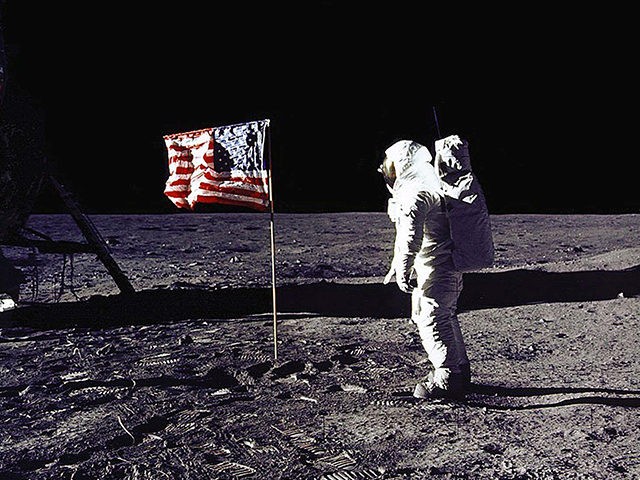CLAIM: President Joe Biden said in his 2021 speech to Congress, “Immigration has always been essential to America.”
VERDICT: FALSE. The United States won World War II, created a middle-class economy, invented many new technologies, revived racial equality, and landed astronauts on the moon during the long period of low migration between 1925 and 1970.
From the 1840s onward, waves of European immigrants flooded into the emerging industrial economy, helping to fill factories providing a cornucopia of goods, including rivers of cheap autos from Detroit factories in the early 1900s.
But public pressure forced Congress to sharply reduce migration in 1924.
The number of new immigrants was 800,000 in 1921 — but it quickly dropped by more than 90 percent, to just 29,000 in 1934 and 39,000 in 1945.
The resident population of immigrant Americans dropped from 14 million in 1920 to 9.6 million in 1970.
In 1955, pro-migration groups began claiming the United States was a “Nation of Immigrants,” but immigrants were only 7 percent of the population in 1955, down from 15 percent in 1910.
New arrivals slowly rose amid the Cold War as Congress welcomed people fleeing communism. In 1957, for example, Hungarian migrants fleeting the Soviet takeover helped bump new arrivals to 327,000.
But U.S. inventions and productivity continued to boom during this low-migration period.
According to PBS, U.S. investors and companies rolled out the television in 1927, frozen food in 1929, radio astronomy in 1931, the defibrillator in 1932, ski lifts in 1937, nylon in 1938, the first digital computer in 1939, the atomic bomb in 1945, suburbia in 1947, the electric guitar in 1948, the first commercial computer in 1951, the polio vaccine in 1957, the compute chip in 1959, the laser in 1960, the idea for the Internet and the actual moon landing in 1969, the fiber-optic cable in 1970, the video game in 1972, and much more.
Americans — aided by a few immigrants — also saw a massive rise in income.
Family income doubled between 1950 and 1970, according to the left-wing Center on Budget and Policy Priorities. But in the subsequent high-immigration era, family income rose far more slowly, by only one-quarter from 1980 to 2020.
Congress loosened immigration rules with the 1965 immigration bill, but the bill didn’t spike migration for more than a decade.
In 1965, 306,000 new migrants arrived under the modified 1924 rules. Twenty years after the 1965 immigration law, 568,000 immigrants arrived, according to the Migration Policy Institute. During this 1965 to 1985 period, the percentage of legal immigrants in the United States rose by 1 percentage point, from 5 percent to 6 percent, according to the institute.
A big jump happened after President Ronald Reagan approved amnesty in 1986, helping to add 1.8 million legal immigrants in 1991.
But the real jump came after President George H.W. Bush worked with Sen. Ted Kennedy (D-MA) to double the annual inflow of migrants from 1990. Their 1990 law now delivers roughly 1 million legal immigrants each year, or roughly one immigrant for every four American births.
The number of resident immigrants in the United States rose from just 10 million in 1970, then to 20 million in 1990, and up to 45 million in 2019.
Immigration benefits the United States with a bigger economy of many consumers, workers, homeowners, and inventors — Hungarian Steven Grove, and South African Elon Musk, for example. Collectively, they helped expand the nation’s wealth that is stored in house prices, patents, and stock market funds.
But, contra Biden, immigration was not essential to America from 1924 to at least 1990.

COMMENTS
Please let us know if you're having issues with commenting.